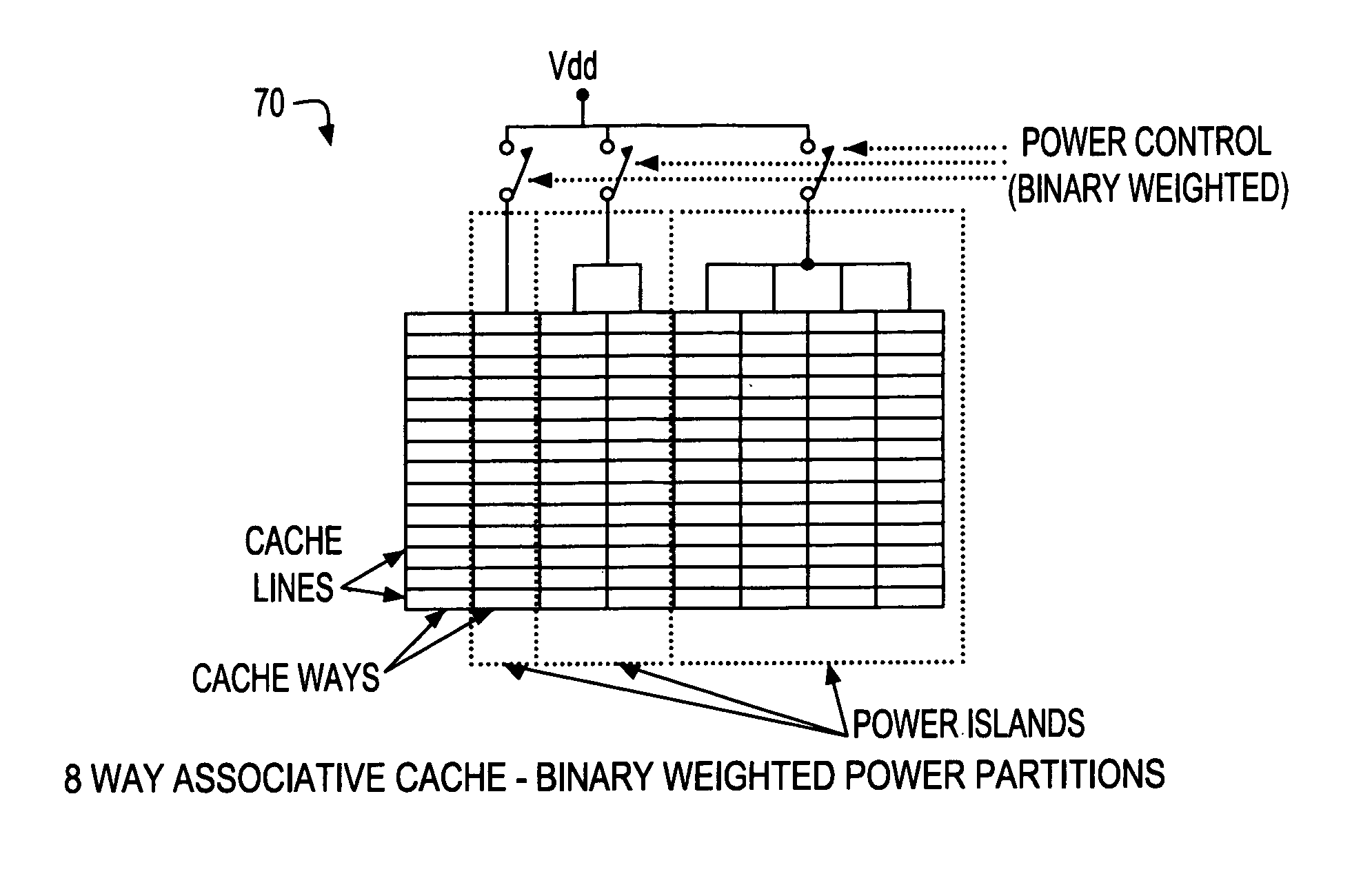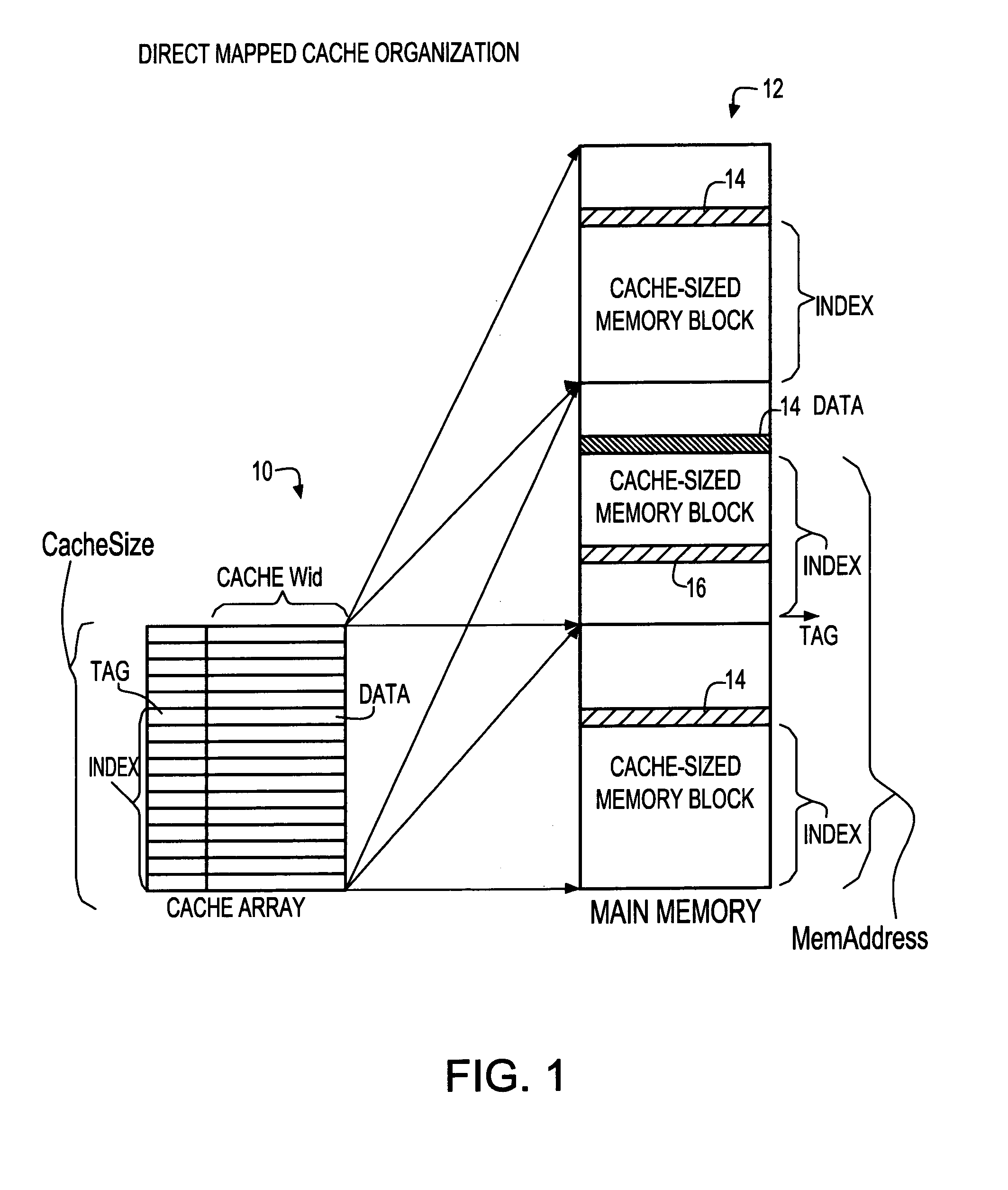Method of dynamically controlling cache size
a dynamic control and cache technology, applied in memory adressing/allocation/relocation, high-level techniques, instruments, etc., can solve the problems of static power dissipation, high-performance processors are increasing in complexity, and the leakage current is increasing, so as to reduce power consumption, not impact performance, and high performance.
- Summary
- Abstract
- Description
- Claims
- Application Information
AI Technical Summary
Benefits of technology
Problems solved by technology
Method used
Image
Examples
Embodiment Construction
[0019]Partitioning Caches for Power Savings
[0020]In accordance with the present invention, to realize the power savings, the cache arrays of a processor are designed such that they can be partially powered off without compromising data integrity or system operation. Two specific methods, referred to as “horizontal” and “vertical” partitioning, are described below in detail.
[0021]Horizontal Partition
[0022]A direct mapped cache implies that each memory location can be cached in exactly one cache location. However, each cache line may be mapped into a number of memory locations.
[0023]FIG. 1 shows a representation 10 of a simplified direct mapped cache array of size “CacheSize” and a map of a processor's memory 12. The memory array 12 is broken down into CacheSize blocks. Data in the memory array can be stored in the cache at the same index as it is in memory (offset from the beginning of the CacheSize block of memory). The “Tag” value of that cache location then stores the number of th...
PUM
 Login to View More
Login to View More Abstract
Description
Claims
Application Information
 Login to View More
Login to View More - R&D
- Intellectual Property
- Life Sciences
- Materials
- Tech Scout
- Unparalleled Data Quality
- Higher Quality Content
- 60% Fewer Hallucinations
Browse by: Latest US Patents, China's latest patents, Technical Efficacy Thesaurus, Application Domain, Technology Topic, Popular Technical Reports.
© 2025 PatSnap. All rights reserved.Legal|Privacy policy|Modern Slavery Act Transparency Statement|Sitemap|About US| Contact US: help@patsnap.com



